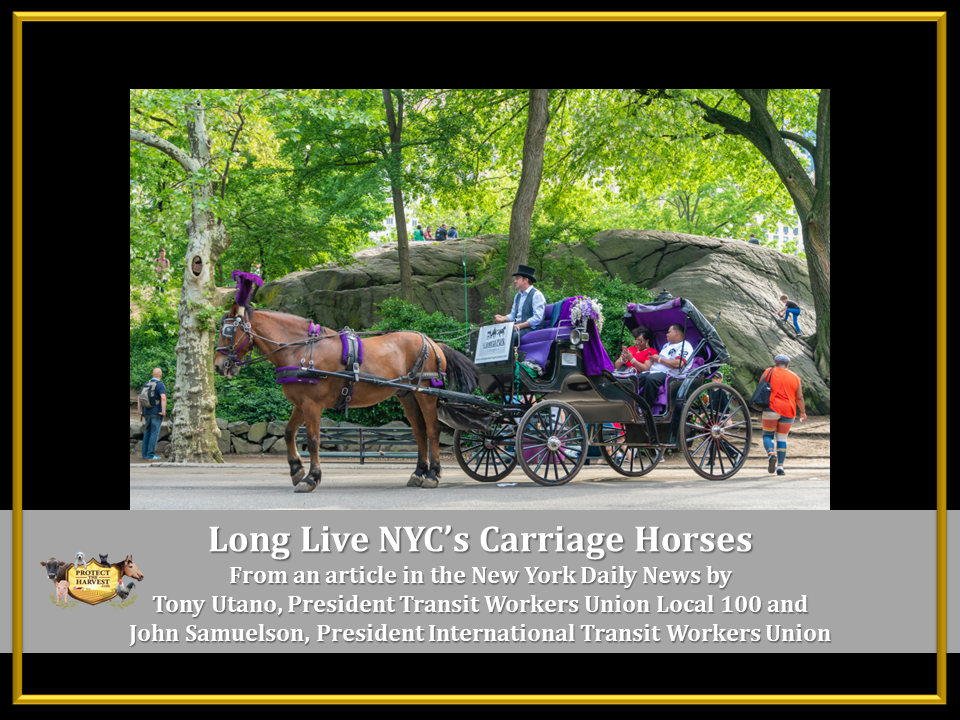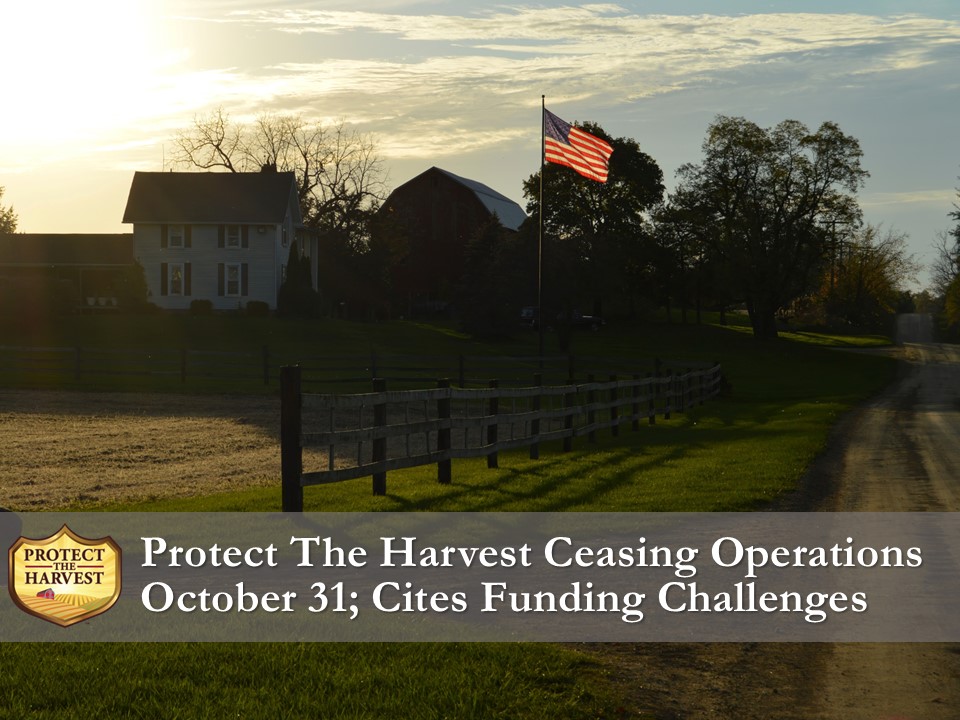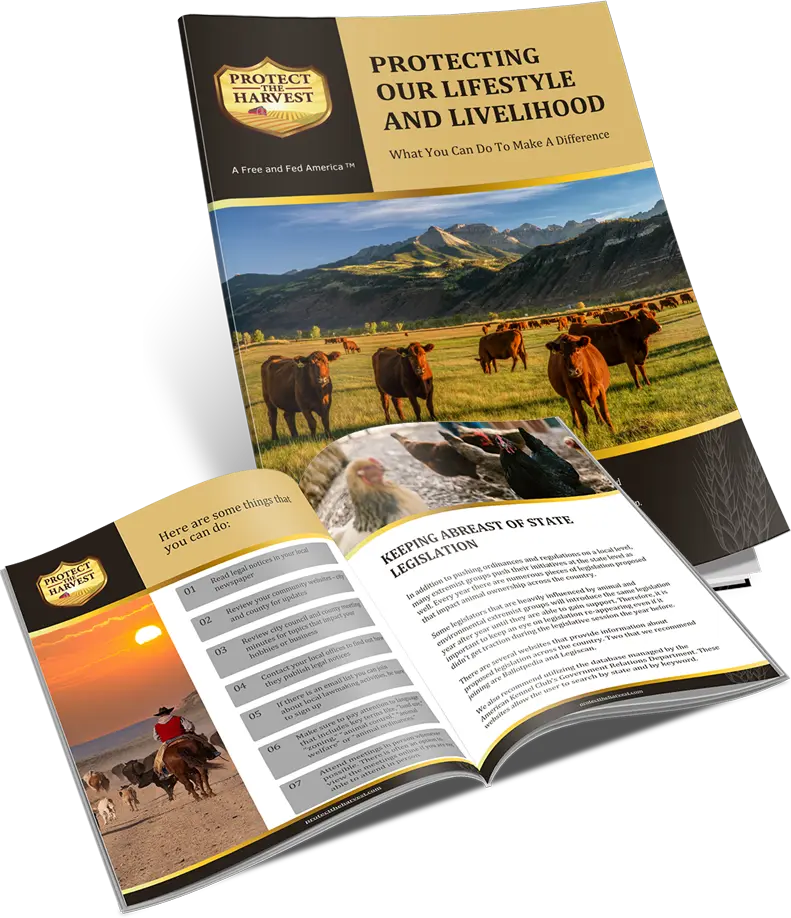From an article in the New York Daily News by Tony Utano, President Transit Workers Union Local 100 and John Samuelson, President International Transit Workers Union
Love horses? Treat yourself, or someone you know, to a Central Park horse-carriage ride.
Horses are domesticated animals that thrive when working and interacting with people.
You can see it at the Central Park carriage stands where these gentle giants will lower their heads so children and adults can stroke their soft faces and pat their long necks. You can see it on the carriage paths as these magnificent creatures walk with confidence and grace through the pastoral oasis.
Too many horses face a much grimmer reality. Hundreds of thousands of horses in the United States lack proper food, shelter or exercise because they don’t have anyone willing or financially able to care for them. More than 100,000 are slaughtered annually.
New York City’s carriage horses, on the other hand, have a purpose — a sustainable job — that generates resources to help pay for their food, shelter and medical care. They’ve been pulling carriages through the park since the day it opened, providing green tours since 1858.
Most of the carriage horses are draft horses, 1,000-2,000-lbs. animals that have been bred for centuries to plow fields, haul goods and transport people. They are genetically hardwired, mentally and physically, for exactly these activities. Providing a handful of rides a day is not a cruel demand of them. Quite the opposite: It keeps them in good shape and spirits.
Today, the Central Park carriage horses and drivers are subject to the most extensive carriage industry regulations in the entire country. They are enforced by five agencies, including the city’s Health Department and the NYPD. There is a constant and multi-faceted effort to ensure these majestic animals are healthy and content. The rules include:
- At least five weeks of vacation on a farm per year. Many spend many months every year in pastures.
- At least two veterinary exams per year.
- No work during extremely cold or hot weather.
- Stationary horses must be blanketed when it’s 40-degrees or colder.
- Routine vaccinations, dental and medical care.
- Hoof trimmings/new shoes every four to six weeks.
- Large stable stalls so horses can easily turn around and lay down.
Central Park’s blue-collar carriage drivers, groomers and stable workers joined Transport Workers Union Local 100 in October. Many are immigrants or children of immigrants who have worked and cared for horses their entire lives. They are horse lovers trying to make a living in our extremely expensive city.
TWU Local 100 is committed to ensuring the horses receive excellent care — just as much as we are committed to helping carriage workers provide for themselves and their families. These are not mutually exclusive goals. They go hand in hand.
There is a special bond between horses and people. Part of the carriage drivers’ mission, as we see it, is to enable city residents — who have little or no connections to the natural world — to experience these beautiful animals up close and personal.
00In March, TWU brought nearly 24 children, parents and staffers from a Brooklyn homeless shelter to meet, pet and feed the horses. The group learned about the horses from carriage drivers, and then rode like royalty through the park. In May, we hosted nearly 20 students from a Bronx middle school.
“It was amazing,” Tanveer Ahmed, 12, said. “The horse going a good speed, the wind hitting your face, the fresh air.” Jade Mitre, 13, called the outing an “extraordinary, once-in-a-lifetime experience.”
Such experiences wouldn’t happen if advocates, including an organization called NYCLASS, get their way.
For years, NYCLASS has tried to get the city to ban horse carriages and replace them in the park with electric buggies. NYCLASS repeatedly makes false allegations of carriage drivers abusing their animals.
We urge you to consider the source and motivation. NYCLASS’s president is a former real estate executive/parking garage mogul named Steve Nislick. City Hall emails obtained by the press a few years ago revealed that Nislick, while seeking the carriage ban, was also quietly pushing another initiative to Mayor de Blasio’s administration: developing housing on the West Side — where the biggest stable is located. NYCLASS also invested $450,000 to develop a prototype of the electric buggy to be manufactured and sold once the horses were cleared out.
In other words, there’s money to be made if the stables and horses disappear.
On April 18, 2014, the Daily News published an article reporting Nislick threatened “to slug a female Daily News photographer in the face” at a car show where the buggy was unveiled.
The bottom line: The Central Park carriage horses, not electric cars, belong in the park. There is a regulatory system in place to address complaints and concerns. Don’t listen to NYCLASS. Go enjoy a carriage ride.
Utano and Samuelsen are presidents of Transit Workers Union Local 100 and the International TWU, respectively



